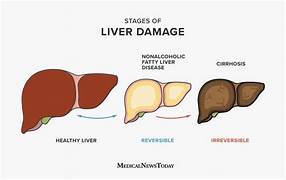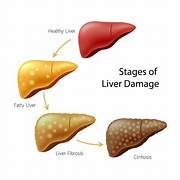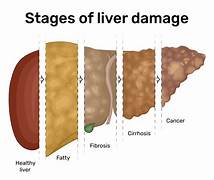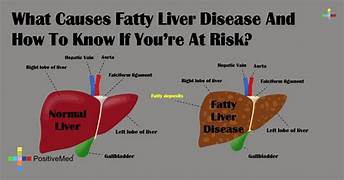Fatty Liver Disease
Fatty liver disease is a common condition that results from the accumulation of excess fat in the liver. Although most people with fatty liver disease have no symptoms, it can lead to liver damage in certain situations. However, making lifestyle changes can usually prevent or even reverse fatty liver disease.

Liver Function
The liver is a crucial organ that performs many vital functions, including
- Producing bile to aid in digestion.
- Creating proteins for the body.
- Storing iron.
- Converting nutrients into energy.
- Producing chemicals that promote blood clotting for wound healing.
- Assisting in fighting infections by producing immunological factors and removing harmful substances like bacteria and toxins from the bloodstream.

What is Fatty Liver Disease?
Fatty liver disease (also known as steatosis) is a common condition caused by an excess buildup of fat in the liver. A healthy liver typically has only a small amount of fat, but when fat accounts for 5% to 10% of the liver’s weight, it can cause issues.

The adverse effect of Fatty Liver Disease
Fatty liver disease usually does not cause significant problems or impair liver function. However, in 7% to 30% of people with the condition, it can worsen over time and progress through three stages
Steatohepatitis Your liver becomes inflamed (swollen), leading to tissue damage.
Fibrosis Scar tissue develops in the liver where there has been injury.
Cirrhosis Extensive scar tissue replaces healthy liver tissue, impairing liver function and potentially leading to liver failure and malignancy.
Liver Cirrhosis
Liver cirrhosis is caused by extensive liver damage, which results in hard scar tissue replacing healthy liver tissue, leading to impaired liver function that can eventually cause complete liver failure.

Types of Fatty Liver Disease
Fatty liver disease is classified into two types
Fatty liver caused by alcohol This type of liver disease is caused by regular alcohol consumption and affects around 5% of the US population.
Non-alcohol-related fatty liver disease (NAFLD) This type is unrelated to alcohol use and affects one in every three US adults and one in every ten children. Although the exact cause is unknown, obesity and diabetes are known risk factors.

